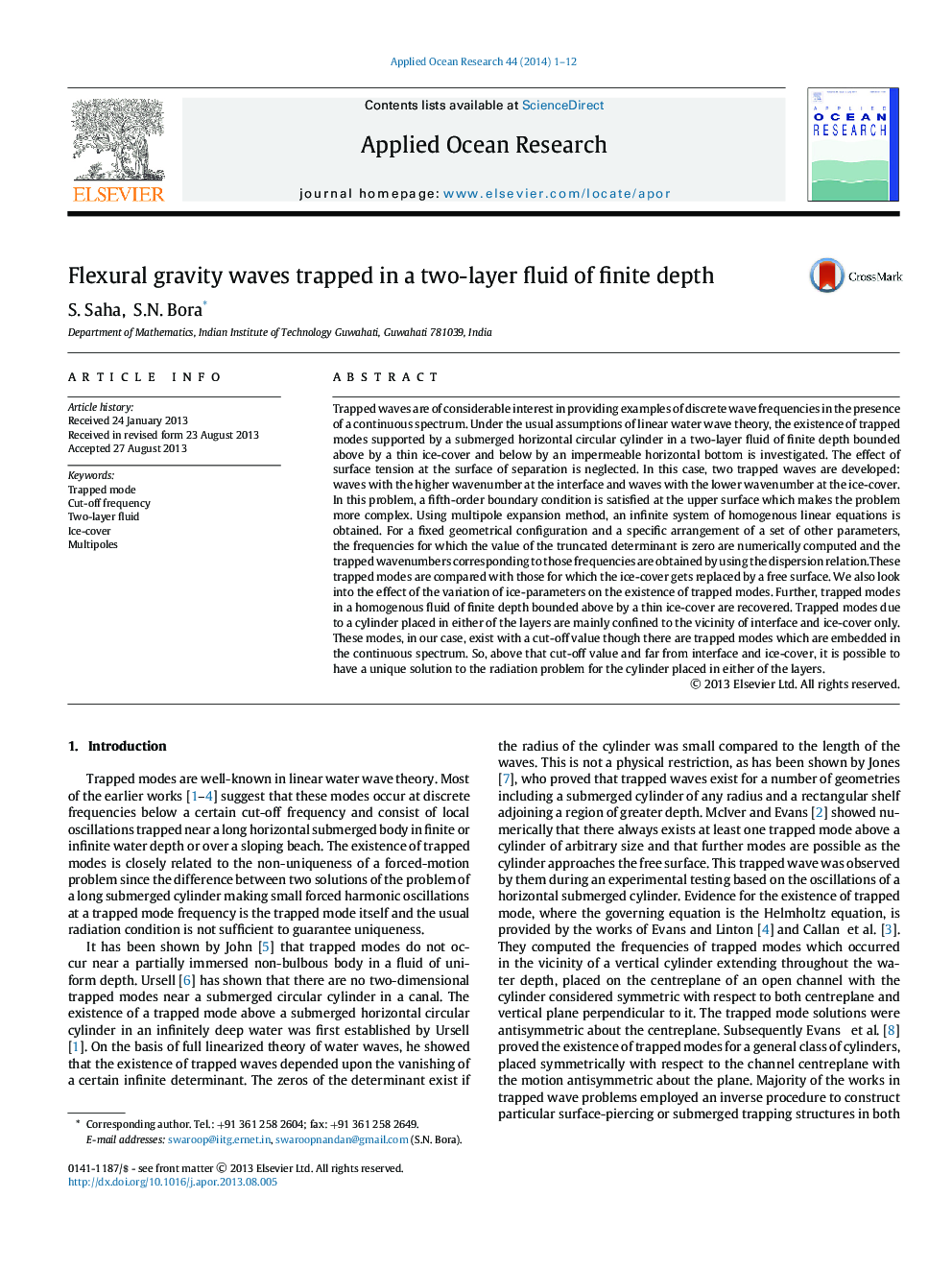| Article ID | Journal | Published Year | Pages | File Type |
|---|---|---|---|---|
| 1720143 | Applied Ocean Research | 2014 | 12 Pages |
Abstract
Trapped waves are of considerable interest in providing examples of discrete wave frequencies in the presence of a continuous spectrum. Under the usual assumptions of linear water wave theory, the existence of trapped modes supported by a submerged horizontal circular cylinder in a two-layer fluid of finite depth bounded above by a thin ice-cover and below by an impermeable horizontal bottom is investigated. The effect of surface tension at the surface of separation is neglected. In this case, two trapped waves are developed: waves with the higher wavenumber at the interface and waves with the lower wavenumber at the ice-cover. In this problem, a fifth-order boundary condition is satisfied at the upper surface which makes the problem more complex. Using multipole expansion method, an infinite system of homogenous linear equations is obtained. For a fixed geometrical configuration and a specific arrangement of a set of other parameters, the frequencies for which the value of the truncated determinant is zero are numerically computed and the trapped wavenumbers corresponding to those frequencies are obtained by using the dispersion relation.These trapped modes are compared with those for which the ice-cover gets replaced by a free surface. We also look into the effect of the variation of ice-parameters on the existence of trapped modes. Further, trapped modes in a homogenous fluid of finite depth bounded above by a thin ice-cover are recovered. Trapped modes due to a cylinder placed in either of the layers are mainly confined to the vicinity of interface and ice-cover only. These modes, in our case, exist with a cut-off value though there are trapped modes which are embedded in the continuous spectrum. So, above that cut-off value and far from interface and ice-cover, it is possible to have a unique solution to the radiation problem for the cylinder placed in either of the layers.
Related Topics
Physical Sciences and Engineering
Engineering
Ocean Engineering
Authors
S. Saha, S.N. Bora,
